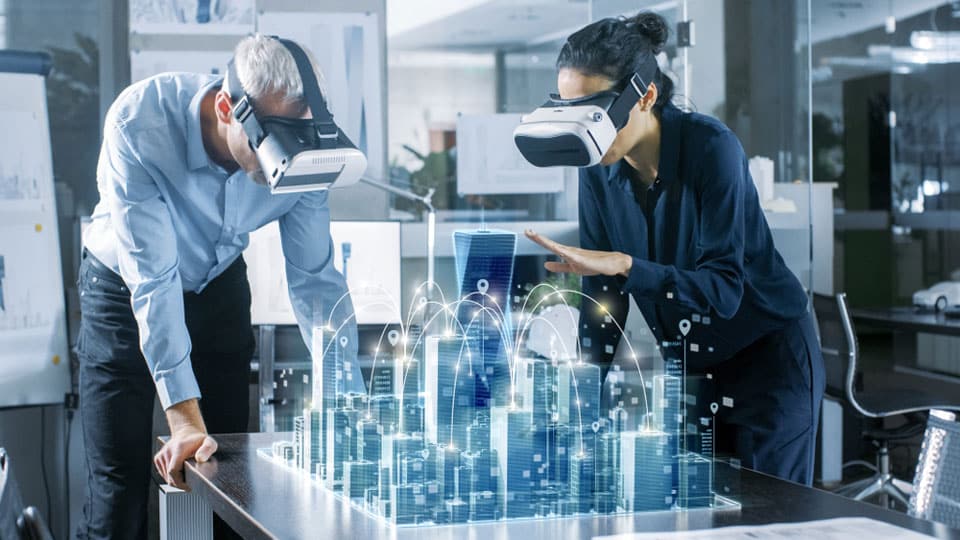How Spatial Computing Can Shape the Future

As time passes by, it seems that technology has seen an exponential and boundless evolution to become more efficient and effective. Simultaneously, this means that the simulated world and true reality begins to integrate with one another and the line between them blurs into one. This is empirically supported as well. Within just 4 years the industry is projected to make just over $50 billion, which is a 67% rise from today’s industry.
Already, we are seeing the transition between products like Pokémon Go, the Oculus Rift series, and most recently with Apple’s Vision Pro. But the vast expanse of altered-reality products does not end there. In short, augmented reality (AR) is meant to add onto the existing true reality with digital information. This is the closest level to ‘true reality’, where there is no possible interaction between the true reality and the overlaid digital information. Within these augmented reality products there is much benefit to be actualized. For instance, Augmedics helps surgeons to appropriately visualize the sections of a patient’s spine, allowing for safer and more accurate surgical outcomes. Other products such as Elbit’s eyesight and Lumus’ Z-Lens are easily wearable glasses that allow for virtual information to be overlayed.
Similarly, mixed reality (MR) allows for an integration of overlayed digital elements with the physical aspects of true reality. However, unlike AR, mixed reality allows for interaction between the digital elements and the physical elements. Namely, gesture recognition and eye tracking help to create an immersive experience for the user, while being grounded in the true reality around them. This technology is incredibly popular, with the Meta Quest 3 and the Apple Vision Pro being 2 of the most common examples of numerous products.
Finally, virtual reality (VR) is the most transformative. This level of ‘augmentation’ is entirely different from true reality. This level aims to entirely immerse the user in a simulated reality, with many different applications simulating separate worlds. One such application is VRPilot, which allows pilots to train and hone their skills. Not only does this allow for a practical, real-world application based on a virtual experience, but also it allows the user a unique experience from other applications on VR.
Spatial computing, the range of true reality to virtual reality, has begun evolving across multiple dimensions, both auditory and visual. Through spatial computing, users can highlight certain aspects of life, or experience something entirely new. Furthermore, the many users of spatial computing have many different desires. Around half of users desire gaming functions, however, there are also significant users that desire it for workouts, education, and health.
Interestingly, the range of spatial computing has something for any portion. In regard to a professional setting, virtual reality business calls, holographic collaboration on a project, and real-time translation are all convenient and useful applications. Conversely, users desiring entertainment are able to play many games while also enjoying immersive music and customizing their own virtual appearance. For educators, spatial computing allows for incredibly interactive and engaging experiences that are likely better for teaching students. Not only can intricate concepts be conveyed more effectively, but the students are also better able to note key concepts. One other use is for health-conscientious users. Because of the electronic nature of spatial computing, AR products can easily track and display biometric data that are useful during or after workouts. Furthermore, it can easily allow a user to keep up with their personalized care routine.
However, this technology has yet to see its end. Since spatial computing is so easily integrable, it could easily replace the functions of a smartphone. Many of the advantages the smartphone has over landline phones can be more accessible and easily included in AR glasses. Therefore, it would stand to reason that, as AR glasses become more affordable to more consumers, they will be favored over smartphones. But AR glasses have other unique advantages. By utilizing reflective waveguides, the physical aspects of the real world can be more easily seen, as well as having a substantial battery efficiency. Additionally, the rampant usage of smartphones in the modern age would only be amplified with something incredibly easy to use, such as smart glasses. Since they can blend in as normal glasses, AR glasses may become part of the apparel of the future, and a revolutionary accessory to anyone with them.
Ultimately, spatial computing, AR, MR, and VR have many applications, in both the real world and within the confines of simulated reality. As time marches on, this technology advances even faster, and is sure to change the future.
Have you read?
Highest-paid CEOs among Russell 3000 companies, 2023.
These Are the highest-paid CEOs among S&P 500 companies, 2023.
Ranked: The 50 Richest Celebrity Couples in the World, 2023.
The world’s wealthiest 300 cities, 2023.
Global Happiness Index: Happiest Countries In The World In 2023.
Bring the best of the CEOWORLD magazine's global journalism to audiences in the United States and around the world. - Add CEOWORLD magazine to your Google News feed.
Follow CEOWORLD magazine headlines on: Google News, LinkedIn, Twitter, and Facebook.
Copyright 2025 The CEOWORLD magazine. All rights reserved. This material (and any extract from it) must not be copied, redistributed or placed on any website, without CEOWORLD magazine' prior written consent. For media queries, please contact: info@ceoworld.biz








